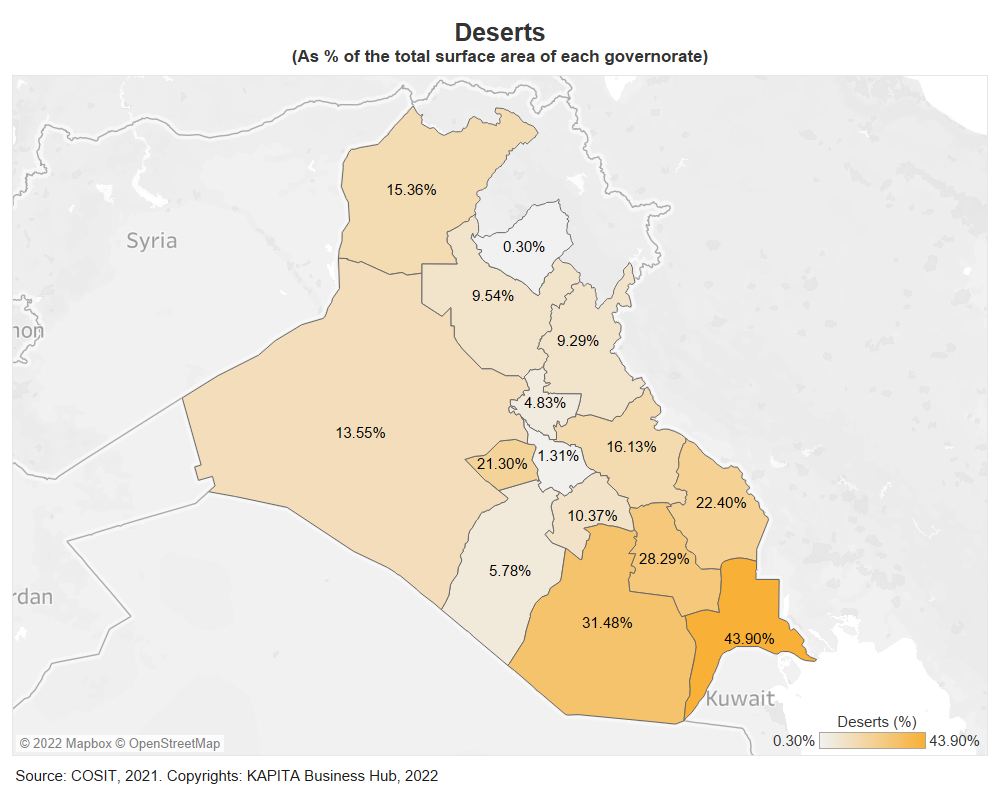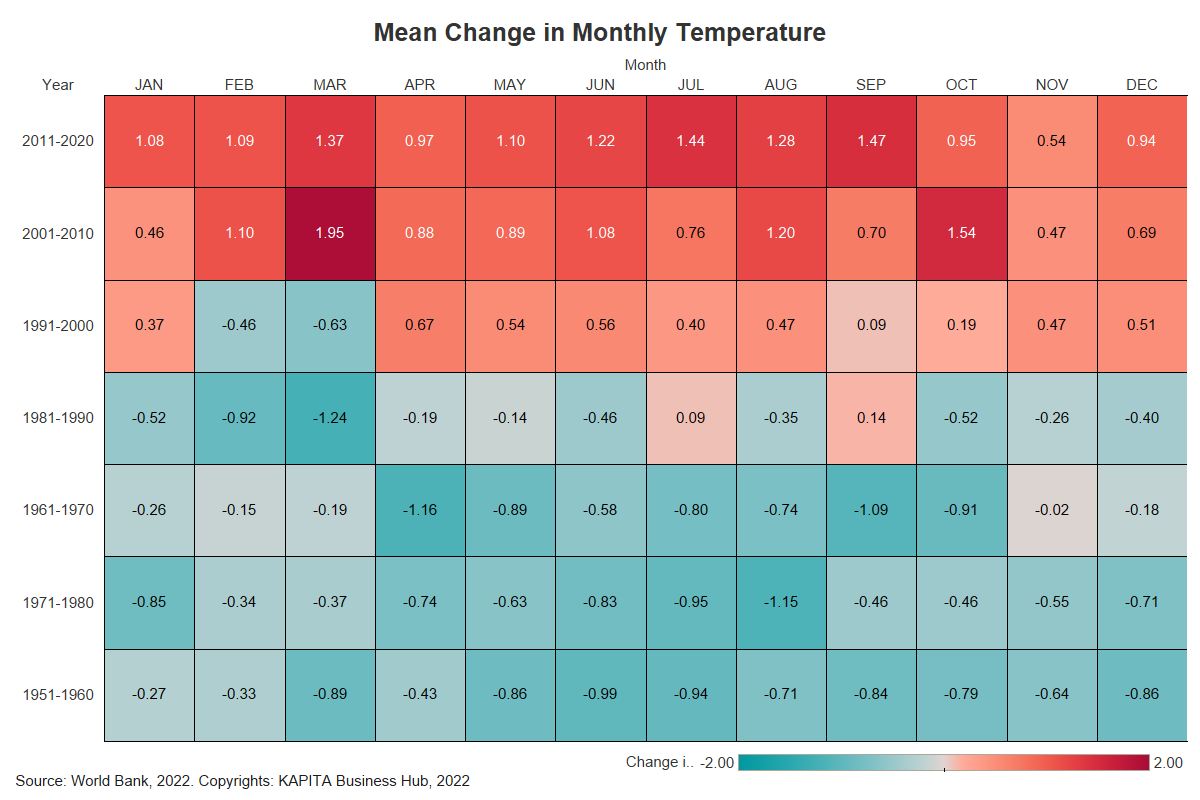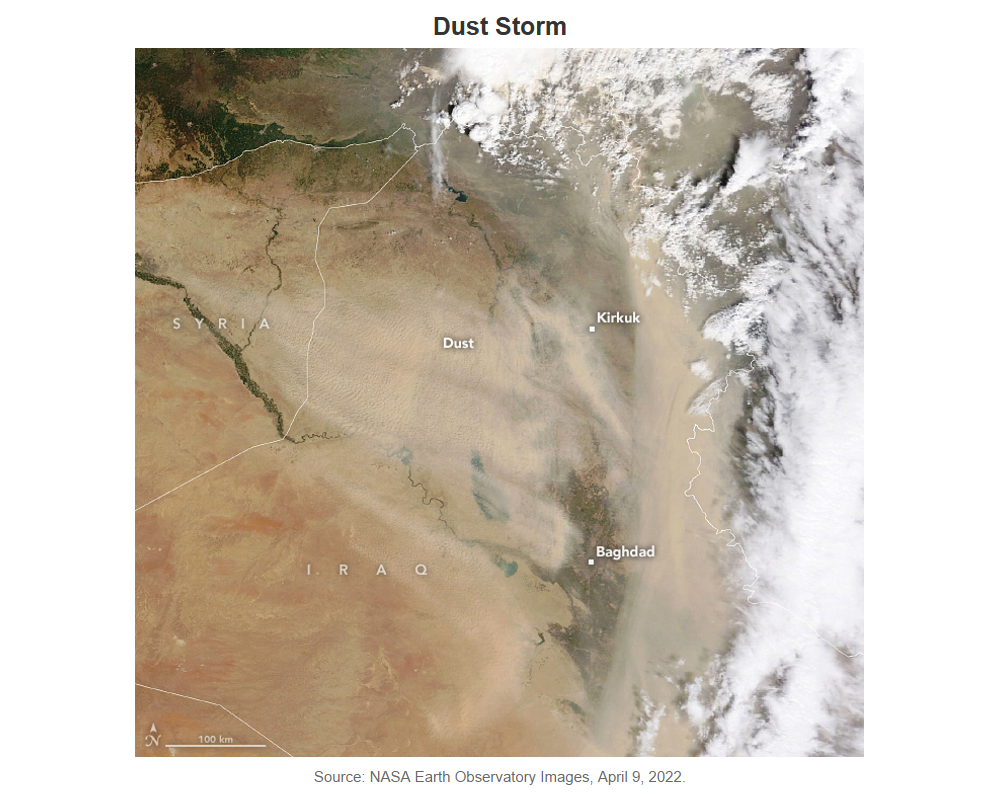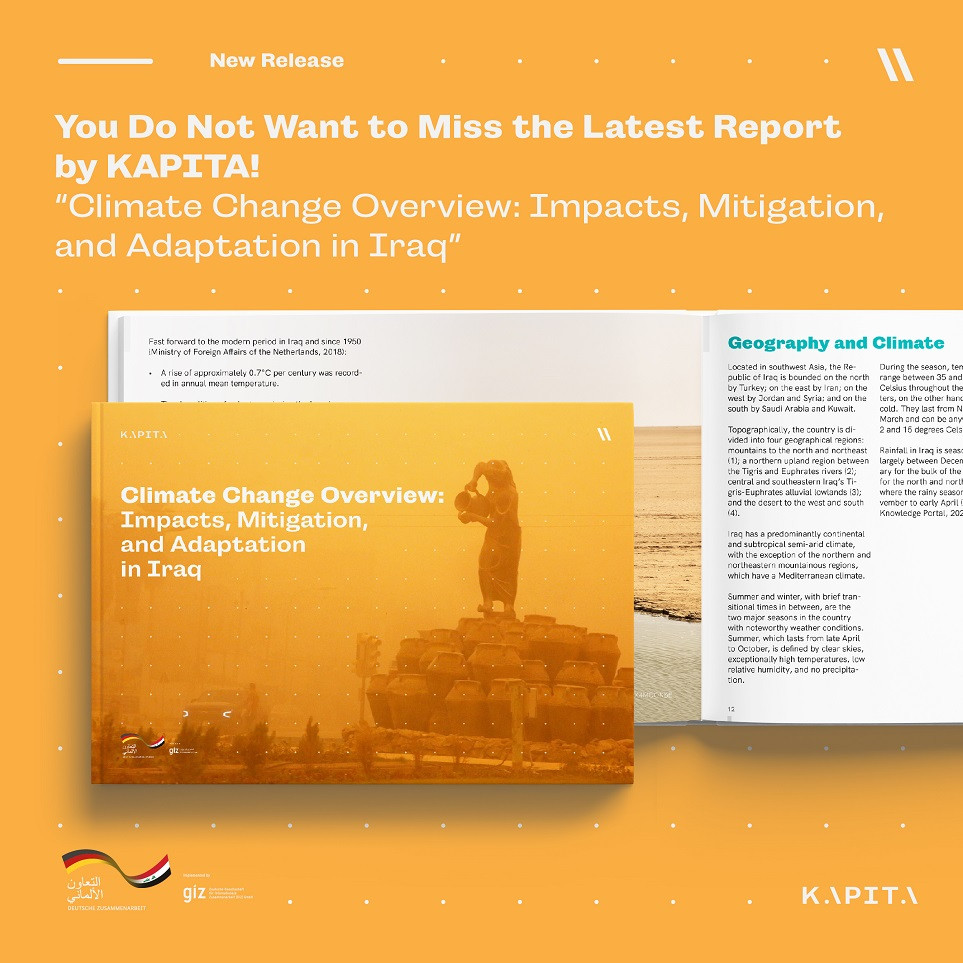Climate Change Overview: Impacts, Mitigation, and Adaptation in Iraq
As global warming becomes more evident, Iraq is on the front row of the climate change show. The chain of climate change impacts are launching the country on a trajectory towards a full-fledged calamity. Desertification, water scarcity, declining precipitation, and dust storms are some of the major climate issues Iraq is currently facing.
40 percent of Iraq's land is desert, this number will continue to grow with an annual loss of 100 square kilometers of arable land to desertification.

Poor management of water resources, reduced volumes of water flowing into the Tigris and Euphrates rivers from origin countries, increased population demand, inefficient water consumption in the oil and agriculture sectors, and conflicts, all contribute to the water insecurity which threatens at least 7 million of the total Iraqi population.
With precipitation falling 40% below normal levels in some regions of the country, the winter of 2020/2021 recorded the second lowest rainfall in four decades. Multiple simulation models predict that if no measures to address this issue are taken, annual rainfall levels in various locations of Iraq may diminish. By 2050, mean annual rainfall is anticipated to decline by 9%, as is the number of rainy days.

Temperature is soaring high to new extremities as degrees above 50°C are becoming more common with the country being reported to warm at least 2 times faster than the global average. Prevalent long-term warming trend with an increasing frequency of extreme temperatures is becoming a routine. Unless global emissions are reduced, the Middle East, including Iraq, is set to experience 121 days per year of extreme heat by the end of the century, making certain areas in Iraq uninhabitable, which reveals the great threat heat is imposing to existence within the country.
In 2022, the surge of prolonged dust storms in Iraq led to a variety of complications. Numerous hospitalization cases were recorded throughout the country as a result of dust-induced respiratory illnesses. The airports of Baghdad, Erbil, Sulaimani, and Najaf temporarily halted all flights during April due to poor visibility, which poses a danger when aircrafts land and take off.

Ratifying the Paris Agreement in 2021, Iraq submitted its first NDC in October, in which it aspires to implement its nationally determined contributions for the period from 2021 to 2030 with the goal of an expected reduction of 1–2% of its total greenhouse gas emissions by national effort, and up to 15% when international financial and technical support is granted.
Iraq intends to reduce its emissions through the implementation of dedicated measures in the energy, industrial, agricultural, waste, and housing sectors. However, haste is of the essence when it comes to these implementations, as the current situation promises increased heat waves, dust storms, water scarcity, and soil erosion; harming population health and eventually deeming certain regions in Iraq uninhabitable.
This report can be cited as:
KAPITA. "Climate Change Overview: Impacts, Mitigation, and Adaptation in Iraq”. July 7, 2022. https://bit.ly/3yPVTyl.



